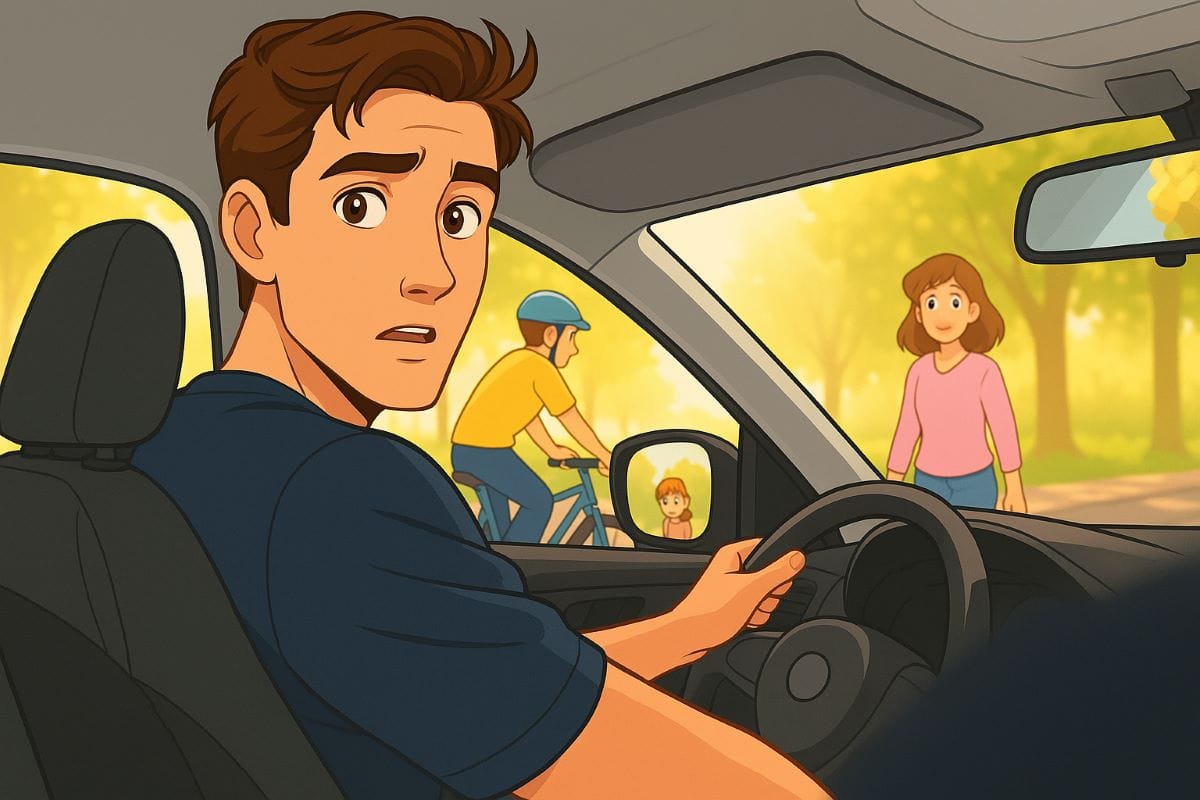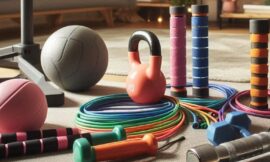Ever opened your car door and nearly hit a cyclist? Or maybe you were the cyclist, and someone flung their door open like they were in an action movie. Yeah… not cool. Enter the Dutch Reach Technique — a weird-sounding, super-smart habit that could actually save lives. Not even kidding.
Whether you’re in New York, New Delhi, or New South Wales, this trick works. And no, it’s not just for Dutch folks. It’s for anyone who opens a car door (which is basically… all of us).
In this post, we’re gonna break it down, keep it real, and make sure that next time you exit a car, you’re not accidentally turning into a hazard for cyclists, pedestrians, or motorcyclists.
TL;DR — The Dutch Reach Technique in 60 Seconds
- The Dutch Reach Technique is a simple habit: use your far hand (opposite to the door) to open your car door.
- It forces your body to turn, making you look over your shoulder — helping you spot cyclists, pedestrians, and motorcyclists.
- It’s proven to reduce “dooring” accidents, especially in bike-heavy urban areas.
- Countries like the US, UK, and Australia are now teaching it in driver education programs.
- You don’t need apps or gear — just your opposite hand and a second of awareness.
- Combine it with visibility gear, anti-dooring tech, and blind spot tools for full safety.
Want the real-world stats, tools, and smart safety tips? Scroll down.
Trust us, this tiny habit could save a life — maybe even yours.
What Is the Dutch Reach Technique?
Alright, picture this. You’re parked. You’re about to step out of your car. Instead of reaching for the door with your left hand (if you’re the driver), you use your right hand. What?
Yep. That’s the Dutch Reach. This simple twist forces your body to rotate, making you look over your shoulder. And that move? It helps you spot oncoming cyclists, pedestrians, or motorcyclists before you open the door.
It’s called “Dutch” because the Netherlands (AKA, Bike City Central) has used this method since forever. But now, countries around the world are catching on. And with good reason.
Why It Matters (Seriously, It Saves Lives)
Imagine being a cyclist cruising at 20 mph, and boom — someone flings their door open. It’s called “dooring,” and it causes thousands of injuries every year. Some fatal. Yikes.
Here’s what happens when people don’t use the Dutch Reach:
- Cyclists get thrown into traffic.
- Pedestrians slam into doors.
- Motorcyclists lose control.
But here’s the flip side:
- In the Netherlands, dooring injuries are rare.
- Cities that promote the Dutch Reach see fewer car-bicycle accidents.
- It’s free. (Can’t beat that.)
So yeah, it’s a pretty big deal.
How to Use It (For Left & Right-Hand Driving)
This part’s important, so listen up. Whether you’re in a left-hand driving country (like the UK, India, Australia) or a right-hand driving country (like the US, Canada, Germany), the Dutch reach technique flips slightly.
- If you’re in a left-hand driving country: Use your left hand to open the driver side door.
- If you’re in a right-hand driving country: Use your right hand to open the driver side door.
See what we did there? Always use the hand farthest from the door. That way, your whole body rotates, giving you a better view of the side mirror and what’s coming from behind. It’s like built-in shoulder checking. Super low-tech, super effective.
Seeing is believing! This short video perfectly illustrates how to execute the Dutch Reach safely and effectively:
Who Benefits? (It Ain’t Just Drivers)
Let’s break it down. The Dutch reach technique might sound like it’s just for drivers, but everyone wins when it becomes a habit:
Cyclists
They’re the ones riding closest to parked cars. A surprise door can literally launch them into traffic. This technique gives them a fighting chance.
Motorcyclists
Moving fast + a suddenly open door = disaster. A quick shoulder check before opening? Game changer.
Pedestrians
Ever been walking close to parked cars and nearly smacked by a sudden door? Yep. We’ve all done that weird sidewalk dodge.
Drivers & Passengers
Not causing an accident feels good. Also, nobody wants a shattered mirror or a trip to court. In short? The Dutch Reach is for everyone — not just folks on bikes. It’s for humans who move around near vehicles. That’s all of us.
This post contains affiliate links. That means if you click a product link and make a purchase, we may earn a small commission—at no extra cost to you. As an Amazon Associate, we earn from qualifying purchases. It’s one of the ways we keep this website running and continue bringing you helpful content. So, thank you—seriously, your support means the world to us!
Safety Tools That Help
Want to go full-on safety ninja? Combine the Dutch reach technique with these tools for max protection.
Anti-Dooring Safety Devices
“See trouble coming… before it gets too close.”
Imagine a gadget that spots fast-approaching cars from behind and warns you before they’re even visible in your mirror. That’s what rearview radar with a tail light does — it’s like giving your bike its own little co-pilot. Especially useful in city traffic or dim evening rides.
Visibility & Protection Gear
“If you glow, you don’t go unnoticed.”
From ultra-reflective jackets to rechargeable light kits and smart helmets with built-in turn signals — this is visibility on a whole new level. Whether you’re riding at dusk, running by traffic, or walking the dog at night, high-vis gear makes sure you’re seen (and safe).
Bike Accessories to Prevent Crashes
“Sometimes, safety is all about being loud and tough.”
A powerful horn that cuts through traffic noise, and durable tires that laugh at potholes — these aren’t upgrades, they’re essentials. Be heard. Stay upright. Ride with confidence.
Car Safety Products (for Drivers)
“Because checking your mirrors shouldn’t be a guessing game.”
Blind spot mirrors give you an instant edge in tight traffic or before opening your car door — especially in bike-heavy zones. Small but mighty, they’re a must-have for anyone who wants better awareness without fancy tech.
Post-Crash Safety & Emergency Tools
“If things go sideways, you’ll be ready.”
Accidents happen, but being prepared makes all the difference. Action cameras can document your rides (and protect you legally), while compact first-aid kits keep help within arm’s reach. Peace of mind? Totally worth it.
Myths, Mistakes & Funny Fails
Alright, let’s bust some myths and laugh a little too.
Myth: “It’s only for Dutch or cycling cities.”
Nope. The Dutch reach technique works in L.A., London, Lagos… anywhere there are bikes, scooters, or people on foot.
Myth: “Kids won’t learn it.”
Dude, if they can master 3 TikTok dances and remember 800 Pokémon, they can rotate an arm.
Fail: Opening your door with your foot
We saw this once on YouTube. Please don’t. It’s not a good look, and it’s definitely not safe.
Seriously though, don’t overthink it. One small habit change = fewer broken bones.
Teach It: Kids, Teens & Newbies
Let’s make this second nature! The earlier it’s taught, the safer the world becomes.
Where to Start:
- Driver’s Ed programs
- Parent rides (make it a family thing)
- Primary schools (seriously — kids get it fast)
Countries Catching On
This isn’t just a Dutch thing anymore. The Dutch Reach is going global. Check it out:
- USA – Now taught in driving manuals in several states.
- UK – Featured in the official Highway Code as of 2022.
- Australia & New Zealand – Campaigns growing fast.
- Canada – Multiple awareness campaigns in urban areas.
And the cool thing? You don’t need new apps. Just your opposite hand.
Sources & Further Reading
Here are some legit sources where you can dig in deeper:
- Dutch Reach Project – Official Site
- Cycling UK: Highway Code Changes (UK)
- NHTSA (US): Bicycle Safety
And trust us — the numbers don’t lie. The Dutch Reach saves lives.
Final Thoughts
Alright, fam. You made it to the end. You’re now officially smarter and safer than most drivers on the road.
So here’s what to do:
- Use the Dutch Reach — every time.
- Teach it to someone else today (your kid, your dad, your Uber driver).
- Share this post with a friend who drives, cycles, or just… opens doors.
It costs nothing. It takes two seconds. And it could literally save a life — maybe even yours.
Be the reason someone makes it home today.
What are your thoughts on integrating the Dutch Reach into daily driving? Let us know in the comments section below if you have you tried it?



